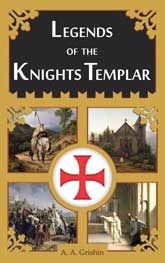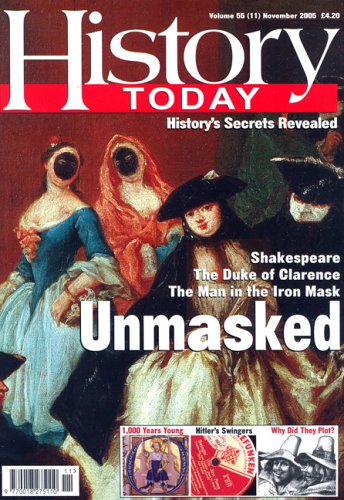 In 1994, the UK-based magazine “History Today” published an article by Helen Nicholson: Saints or Sinners: The Knights Templar in Medieval Europe. Helen is one of my favorite Templar researchers. The article is a short synopsis of the Knights Templar history. You will have a hard time finding something as nicely written and concise. It is also great to see that the magazine’s archives go back so far!
In 1994, the UK-based magazine “History Today” published an article by Helen Nicholson: Saints or Sinners: The Knights Templar in Medieval Europe. Helen is one of my favorite Templar researchers. The article is a short synopsis of the Knights Templar history. You will have a hard time finding something as nicely written and concise. It is also great to see that the magazine’s archives go back so far!
Granted, the article was written before the discovery of the Chinon parchment, which in my opinion complicated things a bit. But Helen’s conclusion warms my heart:
From the evidence, the famous, shocking charges brought against the Templars in 1307 were unknown before 1300. The order was certainly guilty of Fraud and unscrupulous greed, but so too were other religious orders. The brothers’ real crime was their failure to protect the Holy Land after claiming to be solely responsible for its defence.
The history of the Knights Templar is comprised of events that span 200 years. It is covered in excellent books that tell the whole story from different perspectives, and I encourage you to delve deeper into this subject — well worth it. But if you want to get a very brief education in the main historic events that involve the legendary order of warrior monks, this page was put together to help. If you are also interested in numerous tales and stories that surround the ancient order, be sure to check out Legends of the Knights Templar.
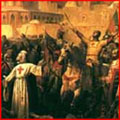 |
1099
Jerusalem captured during the First Crusade. Godfrey de Saint-Omer, one of the future founders of the Knights Templar order, most likely came to the Holy Land at this time. |
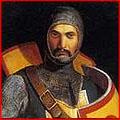 |
c. 1119
The Order of the Knights Templar was established in Jerusalem by nine knights, including Hugues de Payens, the order’s first Grand Master. Their main stated purpose was to protect Christian pilgrims in the Holy Land. King Baldwin II (pictured) granted the knights the use of the Al Aqsa mosque on Temple Mount. |
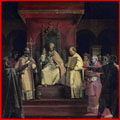 |
1129
The Knights Templar were officially recognized by Pope Honorius II at the Council of Troyes. The Latin Rule, written by Bernard de Clairvaux, was approved as guidelines for this first religious military order. |
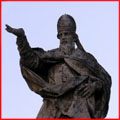 |
1139
Papal bull Omne Datum Optimum (Latin for “Every perfect gift”, James 1:17), issued by Pope Innocent II, made the Knights Templar exempt from tithes and taxes, allowing them to use the spoils of war at their own discretion. |
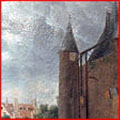 |
1146
The Paris Temple was built, to serve as the global headquarters for the Knights Templar. |
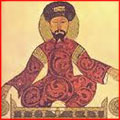 |
1187
On July 4, Saladin defeated Crusader forces at Hattin. Templar Knights captured in the battle were beheaded. On October 4, Jerusalem fell to Saladin. |
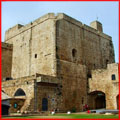 |
1191
The Knights Templar established their new Outre-mer (“Overseas”) headquarters in Acre. |
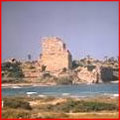 |
1217-21
Castle Pilgrim (Atlit) was built. |
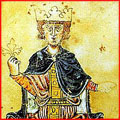 |
1229
Jerusalem was regained by crusading forces through diplomatic efforts of Frederick II. |
 |
1244
In Southern France, papal forces brutally suppressed the Cathars, a powerful heretical group. Jerusalem surrendered by Crusaders for the final time. |
 |
1291
Fall of Acre. The Syrian citadel of Tortosa and Castle Pilgrim abandoned by the Templars. |
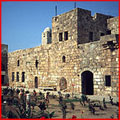 |
1302
Fall of Ruad, the last Christian stronghold in Outre-mer. |
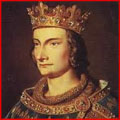 |
1307
Philip the Fair, King of France, orders massive arrests of the Knights Templar on charges of heresy, sodomy, corruption and apostasy. Torture was used to extract confessions, eventually resulting in executions. Outside of France the fate of the Knights Templar varied greatly, allowing many to escape persecutions. |
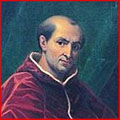 |
1312
On March 22, the Order of the Knights Templar was officially dissolved in the bull Vox in Excelso, issued by Pope Clement V. The order’s possessions were transferred to the Knights Hospitaller. |
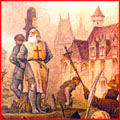 |
1314
Jacques de Molay, the last Grand Master of the Knights Templar, was burned at the stake in Paris on March 18. |
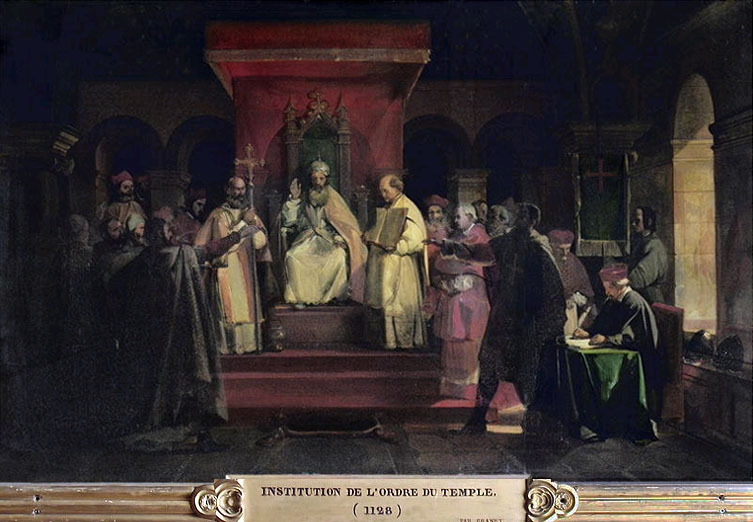
At the Council of Troyes in 1129, Pope Honorius II approved the creation of the Order of the Knights Templar. The Latin rule (Regula pauperum commilitionum Christi Templique Salomonici) was accepted as the basis for the Order’s operations. Sometimes the date given for this event is 1128. Could it be because January 13, 1128 was Friday? 🙂 Regardless, a very important event in Templar history. It was depicted by the French painter François Marius Granet in 1840. I believe the original is now in Versailles. Maybe not much in terms of art history, but a treasured scene for those in the Knights Templar world.
 In 1994, the UK-based magazine “History Today” published an article by Helen Nicholson: Saints or Sinners: The Knights Templar in Medieval Europe. Helen is one of my favorite Templar researchers. The article is a short synopsis of the Knights Templar history. You will have a hard time finding something as nicely written and concise. It is also great to see that the magazine’s archives go back so far!
In 1994, the UK-based magazine “History Today” published an article by Helen Nicholson: Saints or Sinners: The Knights Templar in Medieval Europe. Helen is one of my favorite Templar researchers. The article is a short synopsis of the Knights Templar history. You will have a hard time finding something as nicely written and concise. It is also great to see that the magazine’s archives go back so far!
















